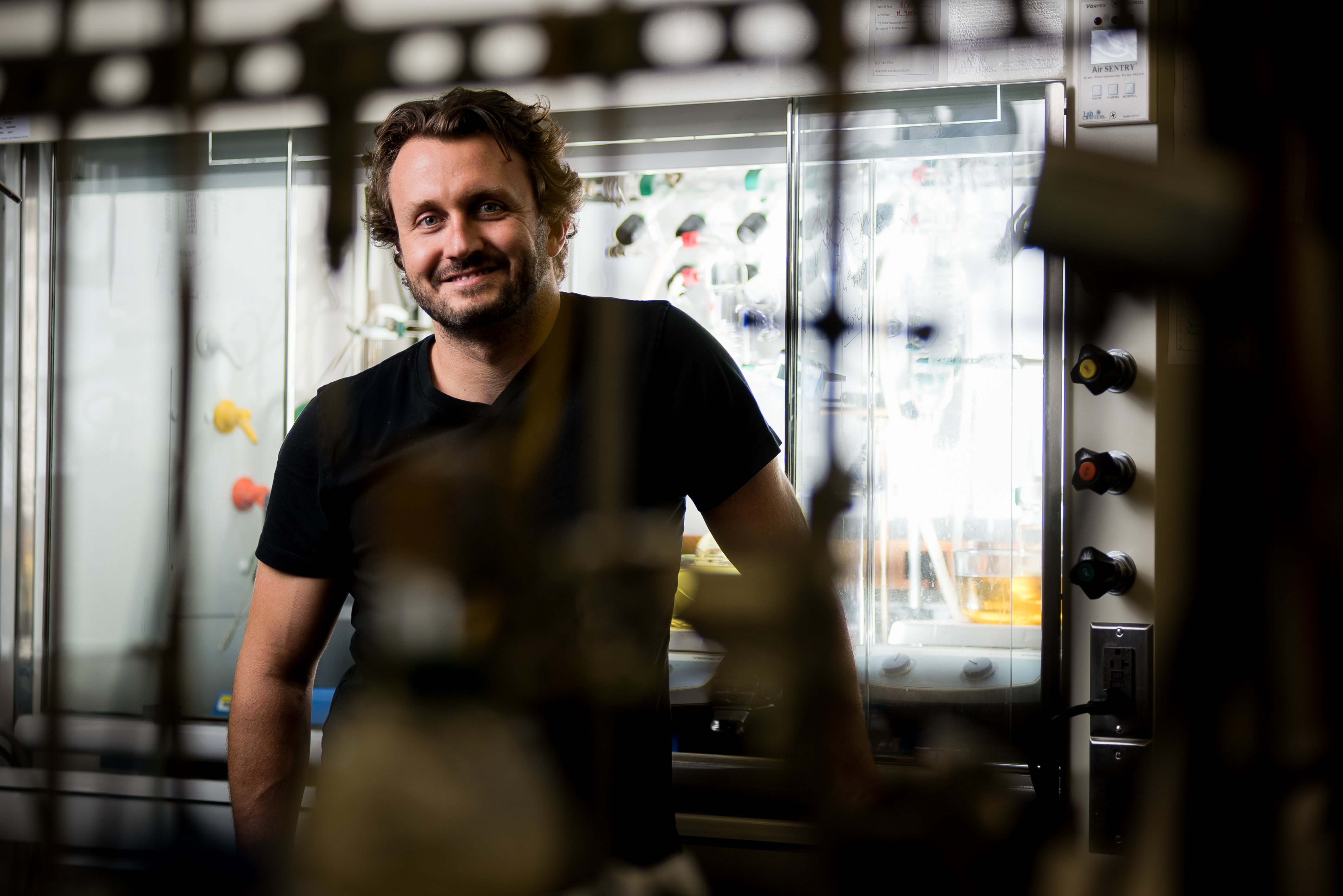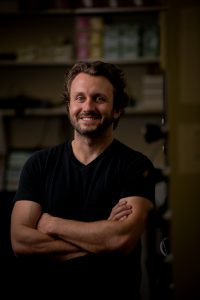
Burning elements from the earth has fueled society since the infancy of the Industrial Revolution. Without major breakthroughs in alternative energy production or storage or an easing of concerns over nuclear power, this seems destined to continue.
But with the developing national and international consensus that emissions — chiefly carbon dioxide or CO2 — from power plants burning fossil fuels contribute to global climate change, electric companies are coming under public scrutiny, if not outright government mandates, to curb these emissions.
The trick will be scrubbing the emissions efficiently so the clean-up process doesn’t syphon too much electricity from the plant. An efficient capture of the gas would ideally be as cheap as possible for power companies and their customers, meaning all of us.
Unfortunately, current methods for scrubbing CO2 and other greenhouse gases are too costly for most power plants to implement.
Dr. Jason E. Bara, a University of Alabama engineering professor, is hoping efforts in his lab to find different chemicals from those now used to clean industrial emissions will lead to cheaper and more efficient methods. UA was recently granted two patents for Bara’s innovative research into carbon capture, and he is working with a company he helped found to discover if these methods can be scaled to work in power-plant sized conditions.
“We pursue this work with novel solvents to hopefully achieve the greatest energy efficiency for CO2 capture,” Bara says. “It’s the magnitude of the problem and the impact on the global economy that makes it extremely important that capture processes be highly optimized when they are rolled out at full scale.”
A PATENTED ALTERNATIVE
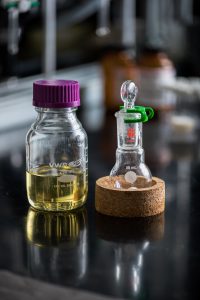
There are international efforts to reduce the man-made emission of greenhouse gasses, or GHG’s, that likely contribute to global warming by trapping the sun’s heat inside the atmosphere. These efforts include emission standards and financial penalties on excess emissions. Nearly all commercially-available efforts at scrubbing GHG’s from emissions use a liquid solution of water and amine — derived from ammonia — that contacts the stream, removing the CO2 or other unwanted gases.
The most common and most studied method is introducing monoethanolamine, or MEA, into natural gas or post-combustion emissions, a process that can capture at least 90 percent of CO2 from flue gas.
The use of MEA to scrub flue gas is energy intensive since recycling the solution requires boiling it to desorb, or rid, the CO2 before recycle of the MEA solution back into contact with the flue gas. The cost of the energy needed to use MEA in power plants, for example, would likely be passed onto consumers, Bara says. Other issues with MEA include corrosion and degradation of plant equipment.
The cost of building and operating a CO2 capture process to treat 90 percent of a plant’s emissions is a major reason the energy industry has been reluctant to embrace carbon capture on a large scale, he says.
Two systems patented by UA in August 2013 and May 2014 would replace much of the water in the aqueous amine solutions with chemical solvents with little to no vapor pressures, or boiling points. Bara’s work shows that swapping most of the water in the process for other chemical solvents saves energy since the solvent can be regenerated without boiling large amounts of water, a costly and energy-intensive process. Bara’s research shows the solvent system can capture the same or more CO2 than MEA.
BODES WELL FOR SCALE-UP
“What’s really nice about this solvent system is that we’re not starting from scratch,” he says. “Many of these cores are already commercially available, and through some very simple reactions, we can synthesize the molecules we want in the lab. This should bode well in terms of solvent cost if we were to scale them up.”
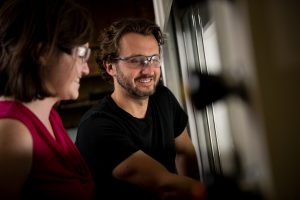
It is all part of his research focus of showing different, and possibly better, ways to capture harmful emissions.
“Solvent-based processes are leading contenders to be the first deployed in carbon capture, so it’s crucial that research consider a wide variety of solvents before making a decision on what’s ‘best’,” Bara says.
This technology has been licensed to the clean tech company ION Engineering in Boulder, Colorado, with the hope of developing it for carbon dioxide capture. Bara helped found ION Engineering and continues as a science adviser with the company.
ION is working to test Bara’s solvent systems on working power plants and has received several funding awards from the United States Department of Energy since 2010.
“We’re at that stage where we’re beginning to test our solvents at real operating power plants,” he says.
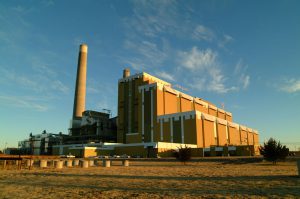
Cost is the final hurdle for the industry to implement carbon capture technologies. Recent trends have seen power companies switch from coal to natural gas, which emits much less CO2, to fire power plants because a surge of natural gas discoveries has lowered its price. It also helps companies meet current or looming emission standards without raising costs.
But, there’s too much untapped coal for it to be abandoned without further advancements in alternative energy sources, Bara says.
“We have a lot of it, and it will get cheaper if there is a broad move to natural gas,” he says.
That’s why research into more effective means to capture emissions from coal-fired plants is needed.
“Carbon capture needs another five-plus years before projects have been scaled large enough to really grasp the full economic impact and see which technologies are the potential ‘winners,’” Bara says.
Dr. Bara’s research is funded by the U.S. Department of Energy, the National Science Foundation and the American Chemical Society Petroleum Research Fund. He is an assistant professor of chemical and biological engineering.
